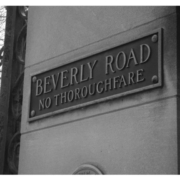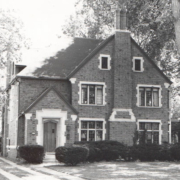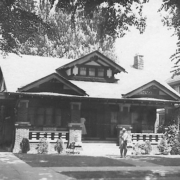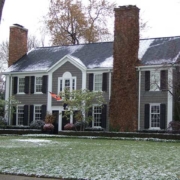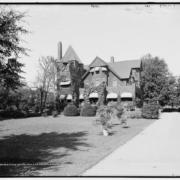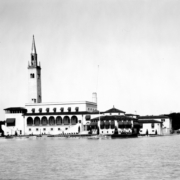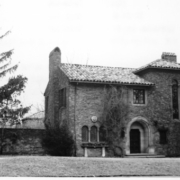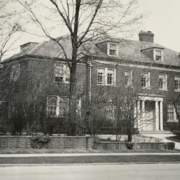Historical Architecture of Grosse Pointe – Welcome to Beverly Road – Part 1
Last week we presented the magnificent 24 Beverly Road, designed by George W. Graves for Harriet N. Atterbury – it was completed in 1914.
This week we stay on Beverly Road, for part 1 of a three part series. Over the next couple of weeks we will be exploring the residences that are located on this special street – the only street in all of the Grosse Pointe communities that is listed on the National Register of Historic Places.
Beverly Road is located on the original Beverly Park sub-division that was platted by Henry B. Joy in 1910. The district was one of the earliest upper-class subdivisions in the Grosse Pointes, and played a major role in the area becoming an upscale community for wealthy Detroiters. All of the residences, aside from #35 (built in 1976), were constructed between 1911 and 1936. The architectural styles on display include: Georgian Revival, Mission Revival, Colonial Revival, English Cottage style, and Renaissance Revival. They were designed by some of Metro Detroit’s most distinguished architects of that era including: Robert O. Derrick, Marcus Burrowes, Richard E. Raseman, Alpheus W. Chittenden, and Raymond Carey. Some of the original residents of Beverly Road included prominent corporate executives and lawyers such as William P. Hamilton, William Cornelius Crowley, Edwin R. Stroh, Sidney T. Miller, William Van Dyke, and Edwin B. Henry.
Today, the private street consists of 15 houses. The homes line both sides of the road that runs from Grosse Pointe Boulevard to Jefferson Avenue. At the end of the street is a decorative iron fence and gates, flanked by two limestone piers that mark the entrance. Albert Kahn designed the Neo-Classical style gates. The date of completion is believed to be around 1907, however, some records indicate their construction is closer to 1912-1916. The gates were built specifically to protect the private thoroughfare, and were in themselves a work of art with detailed scrollwork, floral and leafy patterns, thereby making the gates more of a sculpture than a functional element. Sadly much of the ornamental details on top of the gates are now gone as are the large spheres seen in the image below, courtesy of: ‘Grosse Pointe” by Ann Marie Aliotta, Suzy Berschback. Modern images are courtesy of Grosse Pointe Patch, photographed by Elizabeth M. Vogel.
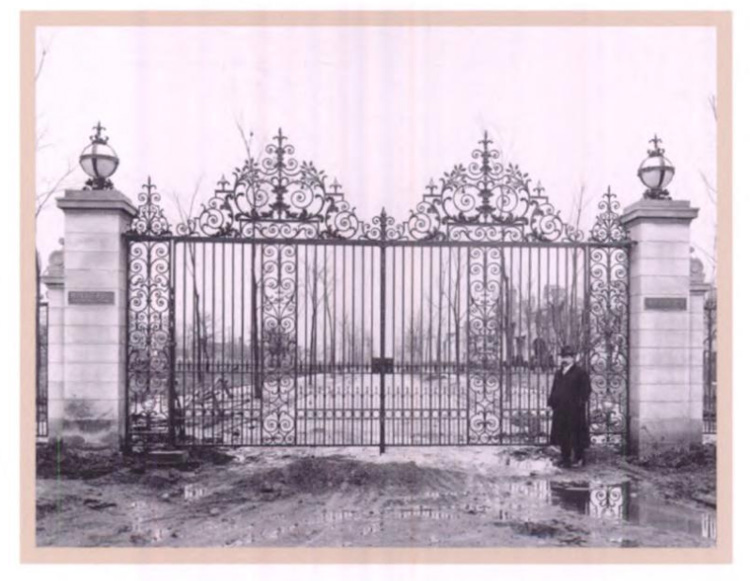
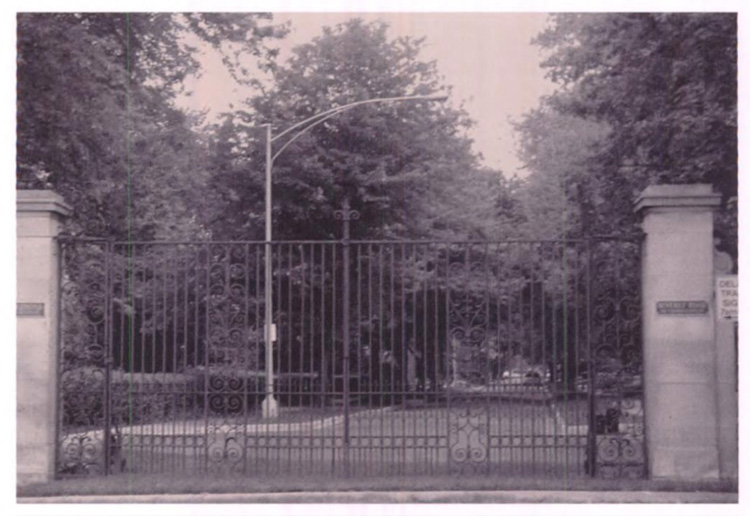
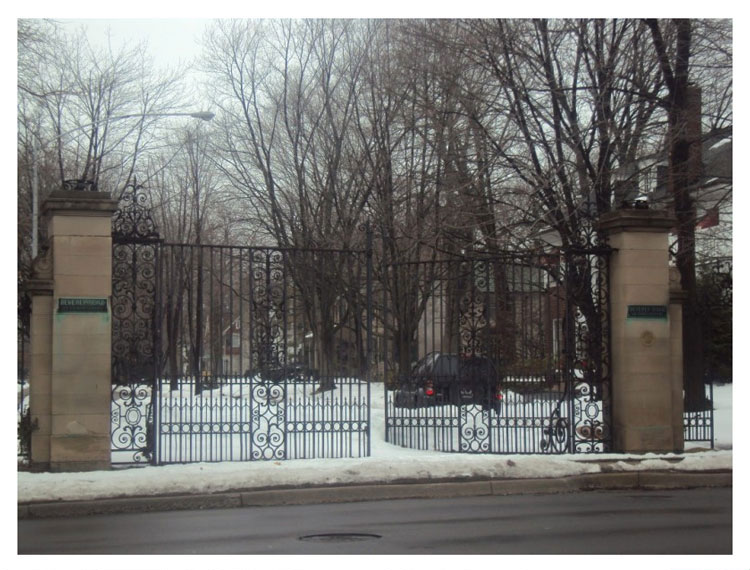
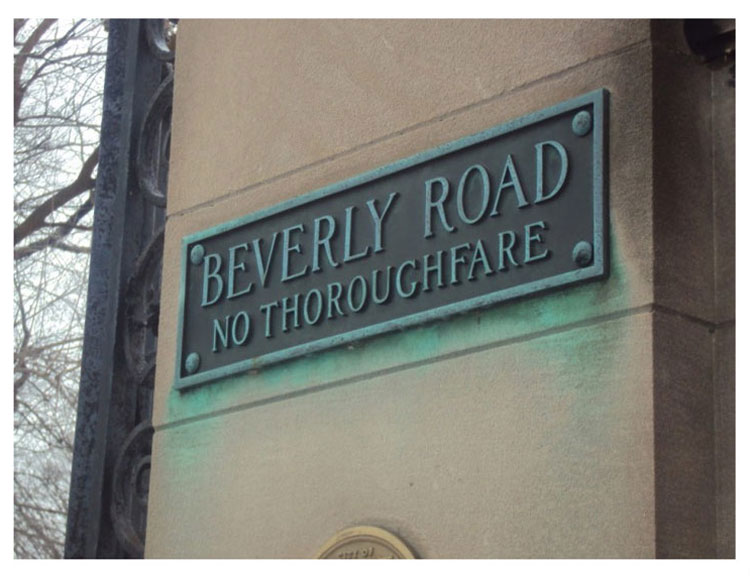
Based on an article in the Grosse Pointe News, 2001, it appears Beverly Road was finally closed to traffic, entering from Jefferson, in spring, 2001, and the gates were closed. It was a request made by the residents, who in turn paid for the sidewalk to be put in along Jefferson where the entrance was. Because it is a private road, Beverly Road has never been maintained by Grosse Pointe Farms. There is no municipal snow removal or garbage collection. Instead, a property owners’ association manage the roads needs.
The development of Beverly Road dates back to the early 20th century – by 1900, Grosse Pointe was far more accessible from Detroit thanks to the Interurban Railway, vast improvements to the roads, and the dawn of the automobile. These major advancements played a major role in transforming Grosse Pointe Farms from a summer colony to a year-round suburban community, thus enticing prominent businessmen with the financial means to build substantial homes in the area. With Lake Shore (Jefferson) at one end of Beverly Road and Grosse Pointe Blvd at the other, the street had easy access to transportation links and the main roads – Grosse Pointe Boulevard, at the northern end of Beverly Road, was developed during the 1890’s as a route for the interurban tracks from Jefferson that ran up Fisher Road, along the Blvd and ultimately to Mt. Clemens. The Blvd also existed as a service road for lake front estates.
The Joy Realty Company (established by Henry B. Joy – chief executive of the Packard Motor Car Company) created the Beverly Road sub-division in 1910, from land the company had purchased in 1909 – it originally contained 18 lots. Based on research by the Grosse Pointe Historical Society, we understand ‘the Joy Realty Company filed subdivision restrictions with each deed of sale (on Beverly Road), requiring that only a single residence, at a minimum cost of $8000 (around $220,000 today), could be erected. An exception was made for physicians and surgeons, who were permitted to maintain offices in their houses. Construction plans had to be submitted and approved by the Joy Realty Company. Building lines for the residence’s were required to be set back twenty five feet from the front property line and at least five feet from the sides, while garages had to be set back 120′ from the front property line’.
Beverly Road was one of the earliest sub-divisions in Grosse Pointe Farms, and arguably one of the most prestigious, primarily because it was one of the first created for wealthy clientele. The future properties were already in good architectural company; to the south across Lake Shore was Rose Terrace; the east side backed onto the rear yards of similar type homes on McKinley Road; further east was Grosse Pointe Memorial Church; while to the north, across Grosse Pointe Blvd, was Grosse Pointe South High School and Christ Church. Lots on the east side of Beverly Road were the first to be sold and developed. The two earliest properties constructed were numbers 28 and 40 – both completed in 1911/12. The houses on the west side of Beverly Road were built between 1920 and 1936. Also on the west side is the masonry wall that runs along Fisher Road. Date of the walls construction is uncertain, but it likely coincides with the completion, post 1920, of the houses on the west side of Beverly. Source: Grosse Pointe Historical Society.
Today Beverly Road is close to how it appeared when the original 14 homes were first constructed, and is now closed to traffic – courtesy of the decorative iron fence and gates designed by Albert Kahn. Next week we will be continuing our exploration of this private street as we preview the even numbered homes, located on the east side – in part 2 of our series on Beverly Road.
*Photos courtesy of the Higbie Maxon Agney archives unless stated.
Written by Katie Doelle
Copyright © 2020 Katie Doelle

